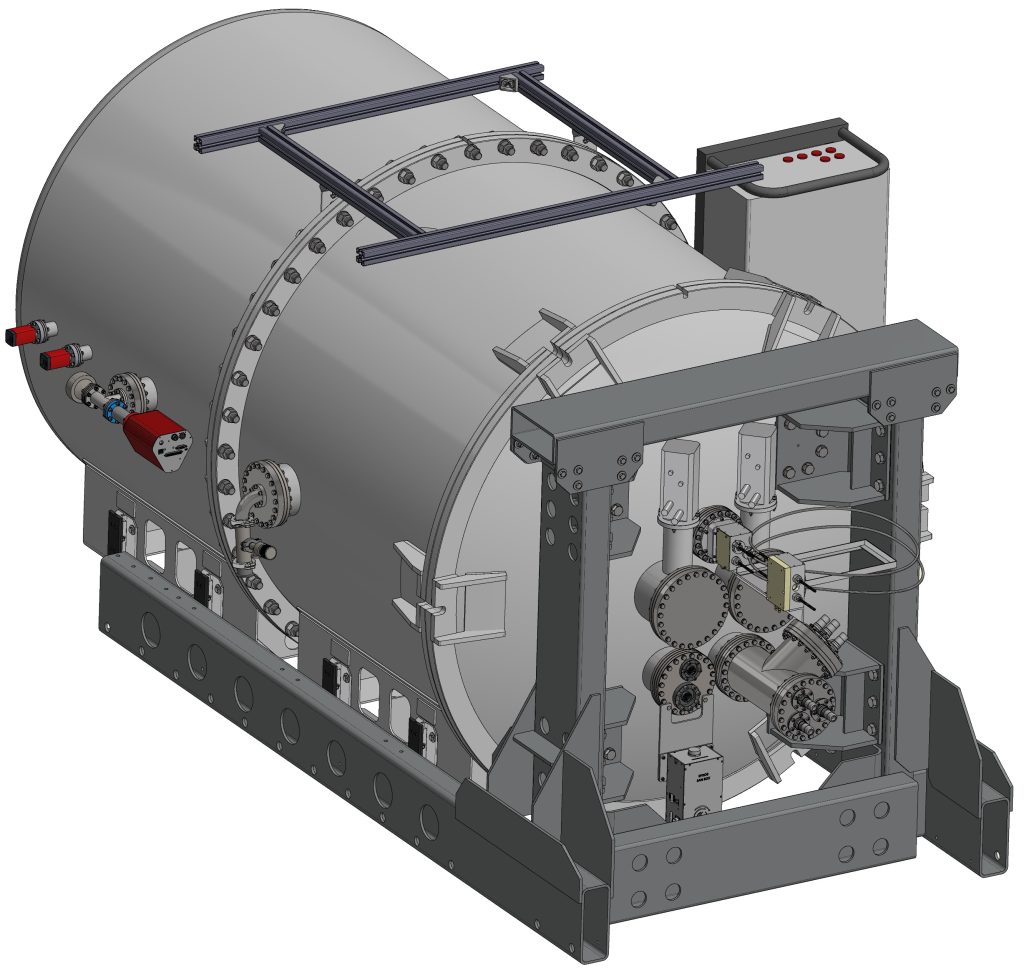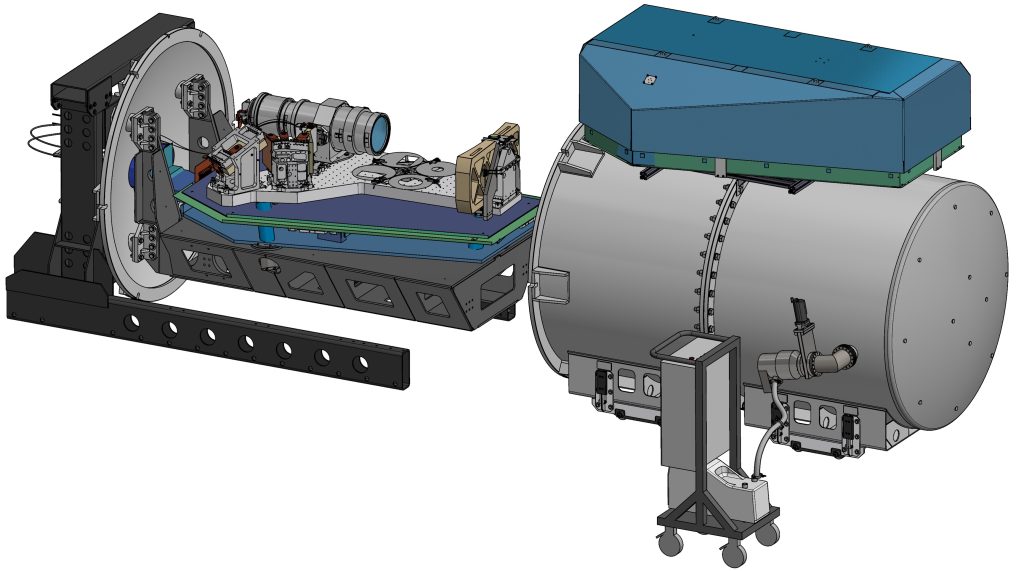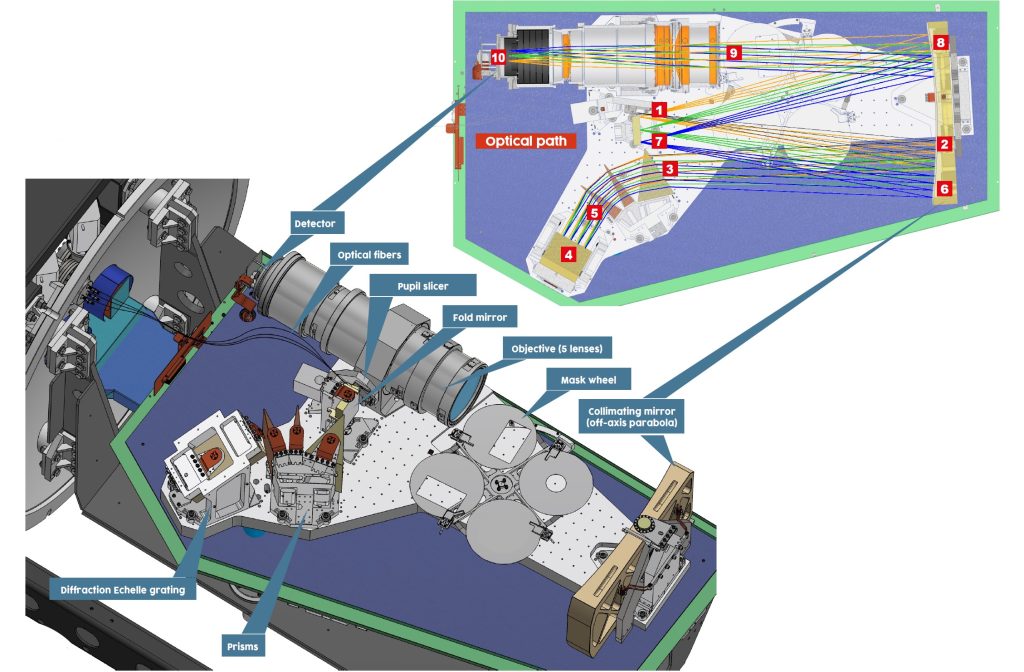The light from the stars is collected by the telescope and then passes through the Cassegrain module before being transported to the cryogenic spectrograph by two optical fibers of 45-meter-long. The spectrograph itself is enclosed inside a cryogenic vacuum chamber of ~4 m3, able to reach a vacuum <10-6 mbar, allowing a cooling-down in order to eliminate the thermal noise (emission of photons by hot parts).
To cool-down the instrument, two helium coolers absorb the calories at the extremities of their cold-heads and lower them to -230°C. They are connected to a piece in Copper (cold drain) that will conduct the cold over the entire length of the instrument.
The optical bench with the spectrograph is located inside the enclosure and can thus reach about -200°C (or 70 K); it is also stabilized to the thousandth of a degree (±0.001°C or ±1 mK RMS, over the duration of the scientific observations). This stability is achieved thanks to eleven control loops controlling the heaters. The instrument is installed on air cushions and the optical bench is mechanically insulated thanks to six tubes mounted on kneecaps (hexapod).
At the level “zero” of the Telescope Bernard Lyot, the cryogenic spectrograph is enclosed in an isothermal chamber regulated at ±5°C.
The spectrograph module of SPIP is almost a copy of its SPIRou companion at CFHT and SPIP will observe in coordination with SPIRou and ESPaDOnS (both at CFHT).

The SPIP spectrogaph on its dedicated optical bench inside its cryogenic vacuum chamber

The spectrograph is a high-resolution (~70,000) fiber-bed Echelle spectrograph.
At the spectrograph entrance, the light passes through the pupil slicer [1] which rearranges the beam as a slit and transmits it to the collimating mirror (an off-axis parabola) [2]. The collimated beam then crosses a 3-prism carousel [3] which separate the light wavelengths by refraction in the horizontal direction. The light then reaches the Echelle grating [4] and is separated by vertical diffraction. The light is then reflected, goes for a second pass through the prisms [5] and is reflected a second time by the collimator [6] to reach the fold mirror [7]. This fold mirror makes the spectrograph compact by folding the beam towards a second clear area of the collimator [8] before entering the camera’s impressive dioptric objective (composed of 5 lenses) [9], to finally be imaged on the detector (H4RG type – 15 µm pixel) [10].
During the spectrograph test phase at cold temperature but also before the observation runs, a motorized wheel with a cryogenic mechanism rotates and positions successively four masks in Aluminum at the camera entrance. These masks allow to perform an optical quality analysis and dark images (2 Hartmann masks, 1 mask with a small aperture, 1 mask used as cover).
A reference light, necessary for the detection of exoplanets by radial velocity method, is also injected into the spectrograph, via a Fabry-Perot module, and follows the same path. On multiple observations of the same star, differences in the position of the spectrum recorded on the detector are measured. These differences of a tiny amount (a fraction of pixels) can detect the motion of the star and can reveal the presence of an exoplanet.

Cryogenic optical bench of the SPIP spectrograph and beam optical path
